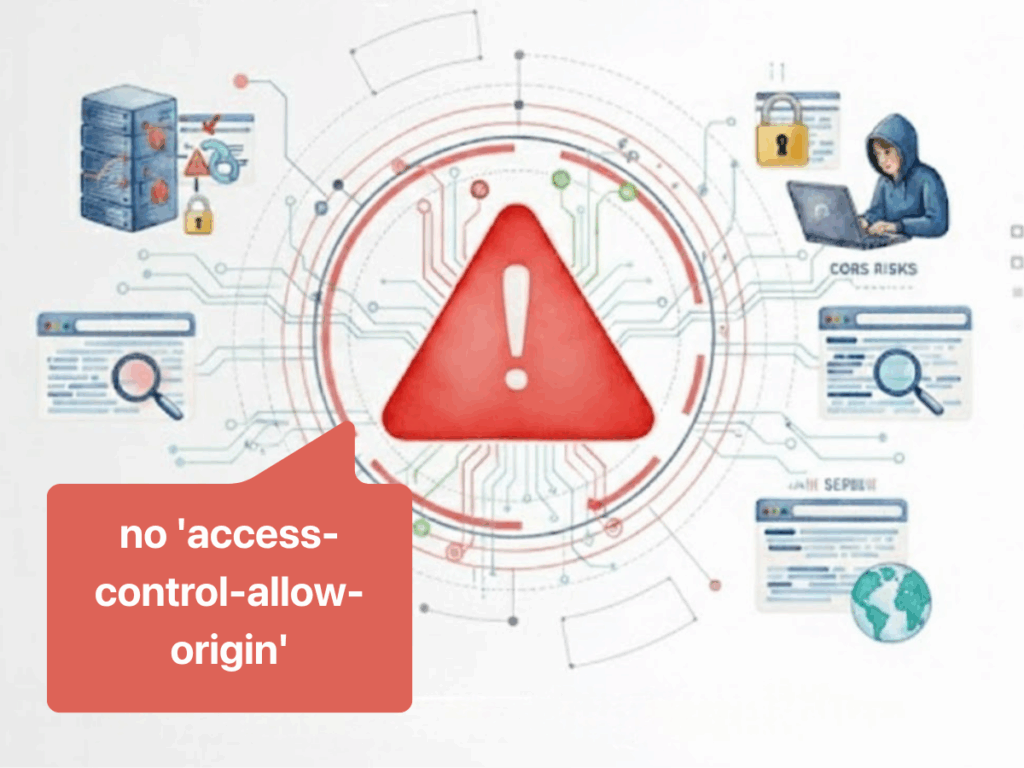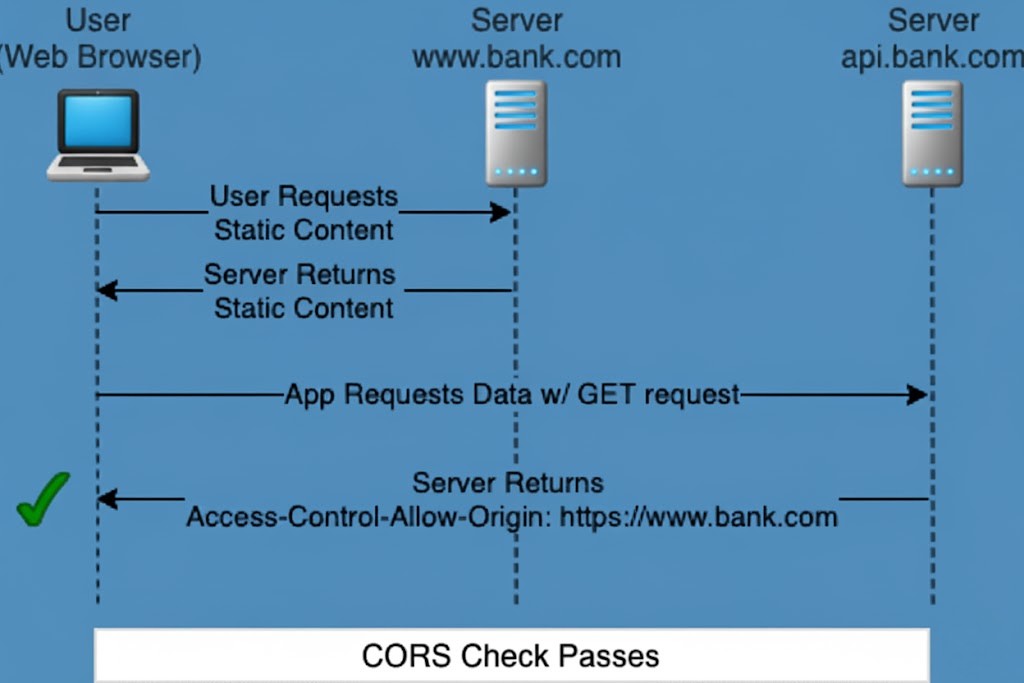Within the workflow of cybersecurity assessments and penetration testing, browser-based security mechanisms are constantly a focal point, and among them, Cross-Origin Resource Sharing (CORS) stands out as a policy with far-reaching implications for the security of both APIs and modern web applications. When a tester encounters the message no 'access-control-allow-origin' header is present on the requested resource in a browser console or development environment, it is rarely just a trivial technical error—rather, it may signal a lapse or oversight in backend cross-origin configuration, or alternatively, a deliberate restriction put in place as part of the security design. In the following sections, we will analyze this message from a 侵入テスト perspective, unpack its technical meaning and potential risks, explore its defensive significance through real-world scenarios, and demonstrate how tools such as Penligent can enable evaluations to be carried out more efficiently and with greater accuracy.
What is no 'access-control-allow-origin' header error
At its core, CORS is a set of cross-origin security rules implemented by browsers to restrict the level of access a webpage may have when attempting to request resources outside of its same-origin scope—covering differences in domain name, port numbers, or protocol. When a server’s response omits the Access-Control-Allow-Origin HTTP header, the browser, even though the underlying network request has technically completed, will refuse to let the client-side code read the response and will instead raise the no 'access-control-allow-origin' header error.
This behavior means that if an attacker attempted to use browser scripts to retrieve sensitive cross-origin data without proper authorization, the restriction would effectively block it. For security testers, however, seeing this message may indicate that the target system’s cross-origin policy is either insufficiently configured or inconsistently applied, warranting a deeper analysis of both the business logic and the intended security posture behind it.

Imagine a security tester running the following cross-origin request test script in a browser console:
fetch("<https://api.example.com/data>")
.then(response => response.json())
.then(data => console.log(data))
.catch(error => console.error(error));
If the server’s response to this request does not include the Access-Control-Allow-Origin header, the HTTP response might look like:
HTTP/1.1 200 OK
Content-Type: application/json
// ❌ Missing Access-Control-Allow-Origin
In such a case, regardless of whether the underlying network request technically succeeded, the browser’s developer tools would display an error resembling:
Access to fetch at'<https://api.example.com/data'from> origin'<https://webapp.com>' has been blockedby CORS policy: No'Access-Control-Allow-Origin' headeris present on the requested resource.
A tester can determine from this that the API’s cross-origin access is restricted or that a cross-origin policy is missing.

Leveraging Penligent to Detect and Validate Cross-Origin Security Risks
In traditional penetration testing, assessing the security of cross-origin policies typically requires testers to manually work through browser developer tools, curl scripts, or proxy capture features in tools like Burp Suite, examining HTTP response headers one by one to determine whether the Access-Control-Allow-Origin is properly configured. This process is not only time-consuming but also prone to oversights or misjudgments, especially when dealing with large-scale API testing scenarios.
By introducing an intelligent penetration testing assistant such as Penligent, the assessment workflow can be transformed fundamentally. With a simple natural language command such as “Check whether all APIs under this domain have cross-origin policy risks”, Penligent will orchestrate multiple tools—including Nmap and Nuclei—to capture and analyze response headers in bulk. It will then validate detected issues to filter out false positives, prioritize them based on severity and exploitability, and finally produce a comprehensive report—complete with vulnerability details, impact assessments, and remediation recommendations—that can be shared and collaboratively reviewed with team members in real time. This approach preserves the depth of evaluation while dramatically shortening the testing cycle and significantly reducing the likelihood of missing critical risks.
Key Security Implications of Blocking Cross-Origin Requests
For penetration testers and security auditors, the no 'access-control-allow-origin' header error should not be dismissed as merely a functional bug; rather, it serves as a concrete indicator of the server’s intent regarding cross-origin access control. When an API deliberately excludes this HTTP header from its responses, it often implies a defensive posture, enforcing stricter isolation to prevent unknown or potentially malicious origins from using browser scripts to fetch sensitive data across domains.
Conversely, in certain scenarios, the appearance of this message may expose configuration oversights—for example, when developers migrate APIs between environments (such as staging to production) and fail to include necessary cross-origin settings, resulting in legitimate business calls being blocked by the browser. More nuanced still, inconsistent cross-origin configurations can provide attackers with a “permission map” of exploitable endpoints, guiding them toward interfaces that are either open or weakened. Thus, distinguishing between resources that intentionally block cross-origin access and those that inadvertently lack support becomes a crucial part of the security testing process.
Effective Fixes for Access-Control-Allow-Origin Misconfigurations
When verification results confirm that an API’s cross-origin configuration poses a security risk or disrupts legitimate business flows, remediation should aim to preserve operational availability while reinforcing security. A frequently adopted low-risk approach is to implement a server-side whitelist that precisely specifies permitted origins for sensitive interfaces, for example:
Access-Control-Allow-Origin: <https://trusted-domain.com>
Avoiding the use of a wildcard * is key here, as while it may quickly resolve cross-origin access issues, it inadvertently broadens the attack surface. Complementing this with Access-Control-Allow-Methods to restrict allowable HTTP methods, alongside robust authentication and session management strategies, can further ensure that cross-origin access is granted only to authorized users.
In complex systems involving multiple front-end and back-end services, cross-origin policy should be addressed at the architectural planning stage rather than relying on ad hoc fixes, thereby preventing the reintroduction of vulnerabilities during future scaling or maintenance.
結論
In conclusion, the no 'access-control-allow-origin' header message is not merely a cross-origin error that front-end developers often encounter; it is also a strategic signal that penetration testers should not overlook when evaluating the security posture of system interfaces. It may indicate deliberate caution and thoughtfulness in defensive design, or it may point to latent configuration gaps.
If your responsibilities include conducting regular security audits of APIs or web applications—especially when you need to efficiently detect a wide range of risks including cross-origin policy issues—consider adopting Penligent as your testing assistant. From the moment you define your target, it initiates an automated risk discovery process and delivers remediation guidance with the expertise of a seasoned penetration tester, transforming cross-origin auditing from a time-consuming challenge into a swift and precise routine task.


